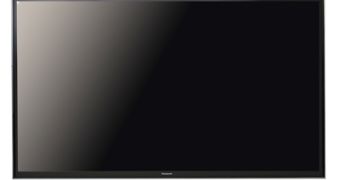Back in 2012, 3D technology ruled the Consumer Electronics Show, but this year was the year of ultra high-definition television sets, which some believe will reach the 10 million shipments barrier in just 12 months.
4K TVs aren't likely to see the same level of success as 3D panels. While 3D is a premium feature that is, in the end, unnecessary, it is also much cheaper to add.
All it takes is a screen refresh rate of 120 Hz and, in the case of particularly mindful companies, some content and security features too.
Even glasses-free 3D technologies are significantly cheaper to implement than 4K resolution support.
Nevertheless, it is the opinion of at least some companies involved in this particular market segment that 2013 will see 10 million UHDTVs sold.
So far, we've seen Samsung releasing an 85-Inch UHDTV (among others), a Panasonic OLED TV, some Vizio panels, an 84-inch Toshiba display and, of course, the 110-inch and smaller Westinghouse series (Samsung has a 110-inch UHDTV as well).
CES 2013 even hosted a 4K 20-inch tablet, of all things, courtesy of Panasonic, but that isn't relevant here.
At any rate, this is basically the full set of existing and upcoming 4K TVs that we know about. There may be one or two more, but the idea is that 4K is still very poorly represented.
Nevertheless, Europe already has an experimental 4K TV channel broadcast, so it is, at the very least, certain that if nothing comes of 4K, it won't be for lack of trying.
The only reason the companies mentioned above, and Chinese corporations TCL and Skyworth, aren't placing the bar higher than 10 million is cost of production and, by extension, price.
Most of the 4K TVs manage to sell for 30-40,000 dollars/Euro, but the 110-inch Westinghouse screen was slapped with a tag of $300,000 / €228,000.

 14 DAY TRIAL //
14 DAY TRIAL //